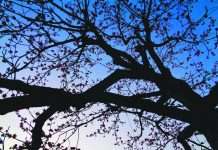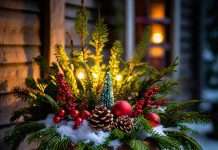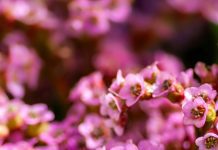
Barbara Shorrock has been gardening in Queensland for over 40 years.
All geraniums are perennials—they are just not all perennial in our zone. They belong to the Geraniaceae family and are separated into the genus Geranium and the genus Pelargonium.
Most gardeners are familiar with the typical bedding plant or potted variety available in garden centres and retail stores everywhere in the spring. We plant them in beds, flower boxes and hanging baskets, and enjoy the blooms from June through September, until we toss them into the composter and plan for next year. These familiar “geraniums” are actually pelargoniums, despite the common geranium label. They grow naturally in some areas of Africa, Saudia Arabia, the Mediterranean, Australia and New Zealand. They like lots of sun, warm to hot temperatures, and a little lime in their soil. Pelargoniums are not frost tolerant but can be kept alive for many years if moved indoors or to a heated greenhouse during winter. The most common varieties we see here are Ivy, Scented, Regals and Zonals.
Zonal pelargoniums are upstanding, erect plants with stiff succulent stems, and fairly rounded leaves. They are most popular in our area and are so named because of the leaf coloration—the zone takes a uniform position around the heart-shaped leaf and is set well inside the leaf margin. The leaf may be green, white or cream, with the zone color contrasting or complementing. Flowers can be single, double or semi-double all clumped into a ball on a single succulent stem. Each individual bloom has 5 petals, although there are exceptions. Colors occur in the warm to hot ranges, from white through all the pinks and peaches to red and burgundy. Sizes include dwarf (max 12 inches in height), miniatures (max 7 inches), and a whole range of others up to shrub size. Gardeners with limited space pinch the branch tips back to encourage compact bushy growth. Easy to grow and maintain with regular watering and warm to hot sunshine, they provide a splash or a carpet of color all summer long.
Regals (most often seen labeled ‘Martha Washington’) have dramatic large flowers with wavy, fringed, pansy or simple shapes. The petals are blotched or streaked with darker colors, providing an endless variety to choose from. I have not found these as hardy to over-winter as the zonals but am determined to keep on trying.
Scented varieties are chosen for the leaves, which come in such scents as rose, mint, citrus, lavender, chocolate, and even Jell-O! Ideally, you should place these plants where their leaves will be brushed in passing, releasing their perfume to be enjoyed.
Ivy-leaved varieties are most popular for hanging baskets, as they have been hybridized to emphasize a trailing habit. They will also climb, if given some help. Forgetting to water or feed can have beneficial results. The stress sometimes changes the pigments in the leaf so that attractive pinks appear in place of greens especially around the edges of the leaves.
True Geraniums are the real perennials here, as many of them are comfortable in Zones 3 and 4. Coming from wild species that have been toughing it out on mountain sides and forest edges, they fit very nicely into our Chinook belt. Commonly referred to as “Cranesbills”, the fruiting body has a long point that looks like its namesake. The flowers are smaller and fewer per group, although maintaining the 5-petals pattern. Colors range from white through purple, with some blues. At the base of each petal is a nectary which produces a sugary nectar. Bees are greatly attracted to these flowers and will flock to your garden if you have geraniums planted. The foliage of wild geraniums is diverse and beautiful. The leaves are mostly divided into five, each of which is much indented. They typically grow in a mound or hummock, or tall, with an open rosette at the base. Useful as a ground cover, they are known to stop weeds in their tracks. They can be naturalized in meadows and woodland gardens and will self-seed in the right conditions. The blooming period is much shorter, (late spring to midsummer) although you can encourage a second show by cutting off all the spent blooms before they set seed. In the meantime, enjoy the leaves and shapes. They can be grown in a sunny bed, or part shade under trees, with more moisture. A lime-type soil (as most of us have here) is welcome.









